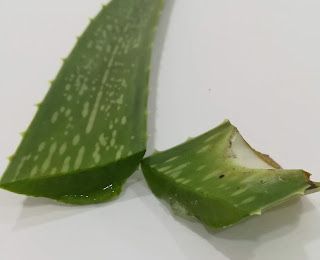Cultivation of green gram or mung bean is been practiced for a long period of time. Farmers from all around the world cultivate the green gram mostly for consumption and also for export purposes. Green gram can be farmed domestic scale or commercial scale. In most remote area of African countries the crop is mainly grown for domestic consumption. Whereas in countries like India, Indonesia, the green gram is mainly grown as a commercial cultivation which contributes to the GDP of the country.
Mung beans can be grown either as a single crop (mono-cropping) or as an inter-crop (mixed crop).
Botanical name of Green gram: Vigna Radiata Family: Leguminoseae
Origin: India and Central Asia
Green gram is a self-pollinated crop. In north Asian region, it is cultivated in both monsoon seasons and summer seasons and in south Asia it is cultivated in one monsoon season (Rabi).
Origin: India and Central Asia
Green gram is a self-pollinated crop. In north Asian region, it is cultivated in both monsoon seasons and summer seasons and in south Asia it is cultivated in one monsoon season (Rabi).
Use of Green Gram / Mung Beans
- It can be consumed as whole grains.
- Preparation of curry or a savory dish (South India).
- Green gram plants increase the nitrogen content of the soil.
- Food for Animals. The husk of the seed can be soaked in water and used as cattle feed.
- Mung beans can be used to produce cereals and supplementary nutrient products.
Health Benefits of Green Gram / Mung Beans
Green gram is an excellent source of high quality protein (25%) having high digestibility. Due to its easily digestibility patients prefer eating it for quick recovery. It is also a good source of Vitamin C (Ascorbic acid).
Mung bean is a highly nutritive grain, rich in proteins and ideal source for starchy or cereal based balanced diet.
Nutritional content of 100g of raw mung been is shown in the below table.
Addition to the Raw mung bean, people eat sprouts of mung beans which contain many other benefits than the nutrients. It reduces the risk of heart deceases, reduce blood sugar levels and improve the digestion activities. Also low carbohydrate content and the total fat content will help you to eat more mung beans without getting fat.
Suitable Environmental Conditions for Plantation
Nutritional content of 100g of raw mung been is shown in the below table.
Nutrient
|
Composition
for 100g of Raw Green Gram / Mung Beans
|
Water
|
9.1
g
|
Energy
|
1453kJ
(347kcal)
|
Protein
|
23.8
g
|
Fat
|
1.1
g
|
Carbohydrates
|
62.6
g
|
Dietary
Fiber
|
16.3
g
|
Calcium
|
132.0
mg
|
Magnesium
|
189
mg
|
Phosphorus
|
367
mg
|
Iron
Vitamin A, Vitamin B6
Zn
Essential Amino
acids
|
6.7 mg
|
Addition to the Raw mung bean, people eat sprouts of mung beans which contain many other benefits than the nutrients. It reduces the risk of heart deceases, reduce blood sugar levels and improve the digestion activities. Also low carbohydrate content and the total fat content will help you to eat more mung beans without getting fat.
 |
| Sprouts of Green Gram - Healthy Diet |
Suitable Environmental Conditions for Plantation
Soil
Green gram can be grown on many varieties, from sandy loam to black humus. Alkaline soils with high pH range of more than 8.5 are not suitable for green gram cultivation. Green gram is very sensitive to water logging conditions, therefore a farmer must ensure proper irrigation system.
Land preparations
The field should be well leveled and the residue from previous farming season must be removed from the soil. Farmers mostly prepare fields in harsh weather conditions where the sun is at its intense move. Therefore giving two or three ploughing using either local plough or harrow is recommended. Each ploughing/harrowing should be followed by leveling and covering the field with hay or polythene to minimize the loss of moisture by evaporation.
In Asia, most research reveals that the recommended spacing are 45 cm x 10 cm, and 30 cm x 10 cm. Seeds should also be sown at an estimated depth of 6 mm.
Variety selection
There are several types of mung beans such as traditional ones and scientifically developed mung beans. The traditional mung bean has many drawbacks such as late maturing, long harvesting period, low yield, small seeds and susceptible to several diseases.
Therefore it is recommended to use scientifically developed varieties which anyone can purchase from relevant institutions in your own country. Normally, good plants mature within 60-65 days and give 1000-1200kg yield per hectare.
It is recommended to treat seeds before sowing by using any kind of organic or chemical fungicide to prevent diseases. Thiram or Captan 2 to 3 g/kg of seeds is used as common fungicide.
Green Gram / Mung Bean Cultivation - 2 is coming soon...


















